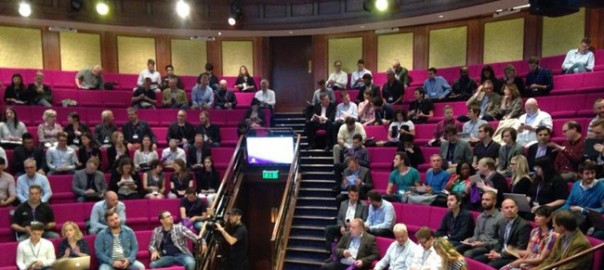Why social is key to creating habit-forming news products
“According to Nir Eyal, it’s often fear that encourages a person to return to a product again and again. Boredom drives return visits to YouTube, loneliness encourages people to go to Facebook, uncertainty encourages people to search Google, he says.
So for newspapers, news sites and digital products, perhaps the driver is FOMO, a fear of missing out. People return to find out about the key news events that they don’t want to miss.”
Latest from the NPR social media desk
“1. Everyone’s talking about Serial. Seriously. Vox has gone one step further and built an interactive guide to keep track of who’s who in this character-driven crime story. Brilliant? Yes. A step too far? Maybe. But the resulting audio cards are really user friendly and offer sideways entry points into the story, in addition to making it all easier to follow. Now, just think of other ways we could break down a story that might make it easier to for the
audience to enter and understand.”
Why We Crave Human-Curated Playlists
“Context is key for music, and that is where services like Songza and Beats Music are picking up tips from FM radio. These services are essentially using algorithms to help people discover new playlists, instead of discovering new songs. This allows for a marriage of both technology and human curation.”
This woman is Hearst Magazines’ secret digital weapon
“Sharing content is another key part of the strategy. Other publishers aggregate news from elsewhere or open their sites to outside contributors to increase their publishing volume quickly and at low cost. With all of Hearst’s magazines as well as newspapers to draw from, the publisher has a long way to go before it has to look to outside sources for content. Part of Lewis’ mandate, then, has been getting Hearst to surface stories that can work across brands. Ultimately, the goal is to have 20 percent of a given Hearst site’s content coming from another Hearst property.”
More than 7 in 10 believe radio will not decline, survey finds
“An ageing population and an increasing numbers of retirees could mean increasing popularity. However, the test is to ensure that young people continue to reach out to radio as they grow older.
“To address this challenge, radio must continue to be a place of ‘music discovery’ and must adapt to new ways of enjoying content on the go – and on modern media devices.”
Quartz rethinks the newsroom for the digital age
“We don’t adhere to the preset roles you have in news organizations,” Seward said. “It prevents a myopic view of how stories need to be told. When you have the ability to think about how to tell a story differently, then it leads to more creative ways.”
Why Instagram isn’t (yet) a great platform for news publishers
“So while Instagram currently isn’t the best host for what most publishers are doing right now, as the platform becomes more video focused publishers with expertise in creating narratives in video form will find Instagram’s a more effective way to reach audiences. Until then, though, as Guyatt says, there’s very little purpose to publishing content to a platform on which it does not belong.”
Why podcasts are suddenly “back”
“The money and raw numbers have finally gotten investors to pay attention, and investors have a lot of press influence. But podcasts have never exploded and have never died. The truth is that they’ve grown boringly and steadily for almost a decade, and will likely continue to do so. And that’s great!”
“To see the mistake here, just look at the most popular mobile app supposedly leading this turn away from the web: Facebook. A substantial portion of Facebook content offers links to other websites. Tapping them opens a browser within the app, and there you are, on the web. The latest version of Apple’s iOS mobile operating system, in fact, brings in-app browsers on par with the company’s own Safari browser in terms of capabilities and performance.”
It’s small touches that can make a difference in New York’s layouts
“Each week, Williams and his designers choose one of the feature articles set to appear in the print magazine, usually the cover story, and brainstorm ways they can add visual design elements that improve the storytelling process. This has become increasingly common at many publications ever since the launch of Snow Fall, the multimedia story project produced by a team of New York Times journalists, designers, videographers, and coders — though when I mentioned Snow Fall, Williams was quick to note that New York’s forays into the medium are much less epic in scale. “It’s possible to build them with each issue and without overwhelming the team,” he said in a phone interview.”
